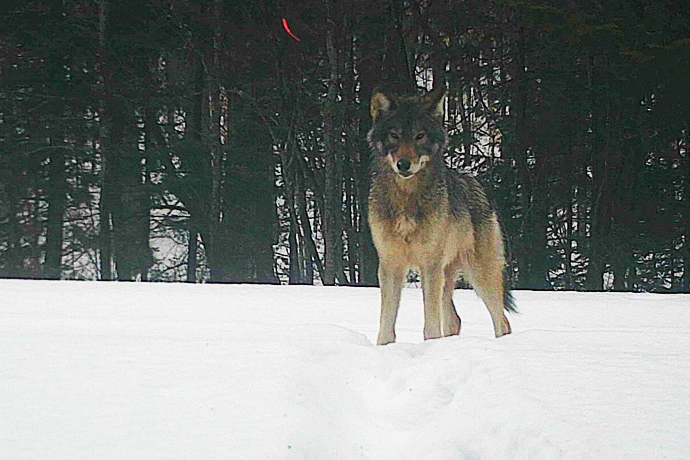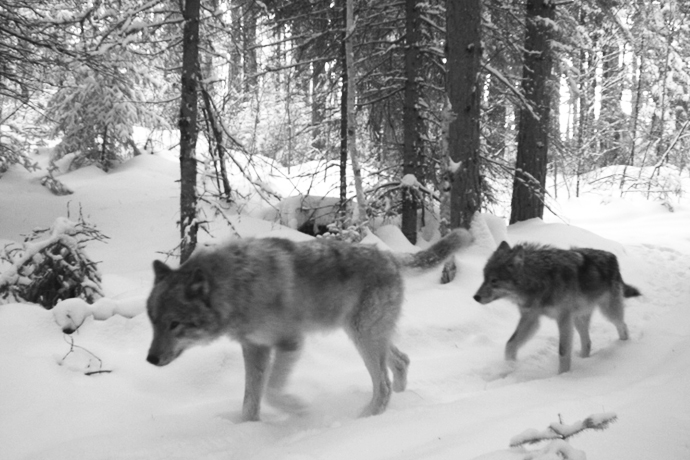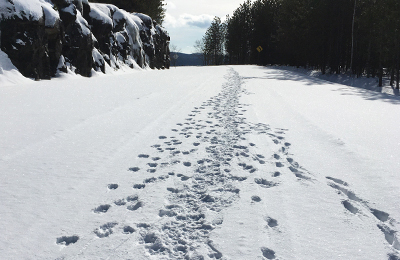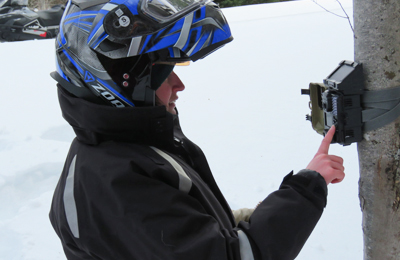
Learn more about the wolf to protect it
La Mauricie National Park
Wolves have a bad reputation, fuelled by fear. That said, they are discreet, they stay away from humans and contribute greatly to the balance of the forest by controlling moose, white-tailed deer and beaver populations. However, wolves are vulnerable to hunting, trapping and poaching in areas surrounding the park, as well as to habitat loss or fragmentation, particularly due to road development.
La Mauricie National Park's conservation team protects wolves through monitoring, visitor sightings and collaboration with regional stakeholders. The team has been monitoring the status of the wolf population living in the park since 1971 and has carried out annual tracking as part of the ecological integrity monitoring program since 2012. The team wants to know more about the number of wolf packs, the number of individuals per pack, their movements, their habitat and the species that frequent the park in order to implement protection measures. The team is also trying to confirm whether the eastern wolf can still be found in the park, since it is a threatened species according to the Committee on the Status of Endangered Wildlife in Canada (COSEWIC) and is listed on Schedule 1 of the Species at Risk Act. The park is a favourable habitat for grey wolves, boreal wolves, eastern wolves and coyotes.


Following the trail of wolves
Every year from January to April, the conservation team counts the number of wolves in La Mauricie National Park by analyzing tracks left in the snow and photos taken with wildlife cameras. This is a way of measuring the park's ecological integrity and monitoring its health. These packs seem to have been doing very well for several years! Since they are sensitive to a variety of threats as they move outside the park, the team's annual monitoring efforts are important to ensure that the situation is maintained.
Transcript
[Parks Canada logo]
It will take all day to do the tracking. We’ll leave for the western sector. We start on Wapizagonke Lake. We’ll do basin 2, basin 3 and basin 4 and then we’ll get to Anticagamac Lake. As for the eastern sector, it’s really the road.
Then we enter Soumire, Giron, Dubon, and Dauphinais lakes, then the Lac des Cinq up to the Lac des Cinq camp. It’s a big day! We’re back at the truck by 4 p.m. if all went well. When tracking wolves, it’s really important to do it 24 hours after a snowfall.
Basically, the first reason is to erase old tracks that would distort our data. The second reason is to give the wolves time to move. Wolves are a species that moves quite quickly.
If we are able to detect the presence of wolves in the eastern sector and then in the western sector in the same day, we can affirm that there are two wolf packs in La Mauricie National Park. Here we can see a wolf track.
It started at Brodeur Creek, and then you can see that they are heading toward Modène Lake. The wolves travel in single file and we can see that one wolf left and then re-entered the trail. We can see that, probably at the end of the day yesterday (the tracks had time to freeze in the slush, it provides good clues), five wolves passed by. There’s urine, wolf droppings, and moose hair in all of this. After they get out of the lake, you can see that they made a yarding area, to get back to the woods where there is more snow. It’s extremely interesting and we have all of this in our beautiful La Mauricie National Park.



Among other things, wildlife cameras installed in the park will help identify wolf dens, meeting points and movement corridors in order to better protect these animals.
Working together to protect wolves
Wolves move over a large territory that ranges from 500 to 700 km2, which is more than the 536 km2 that make up La Mauricie National Park. The park's conservation team therefore works with regional stakeholders to protect wolves and their habitat in areas surrounding the park. This is known as ecological connectivity. The Connectivité écologique Mauricie group, which includes the park team, works to maintain and restore habitats and movement corridors for species in La Mauricie region, like the wolf.
Reducing obstacles to wolf movement is important to prevent wolves from becoming isolated from other wolves and consequently trying to breed with other canid species, like the coyote. Hybridization is a threat to the genetic identity of species.
Get involved!
Visitors who spot a wolf or traces of wolves can report their sightings on the iNaturalist website and notify park staff to help monitor the species. Protecting the wolf involves protecting an entire ecosystem. For example, this predator limits overabundance of moose and white-tailed deer, preventing excessive browsing of the undergrowth. Everyone's cooperation is crucial!

- Date modified :